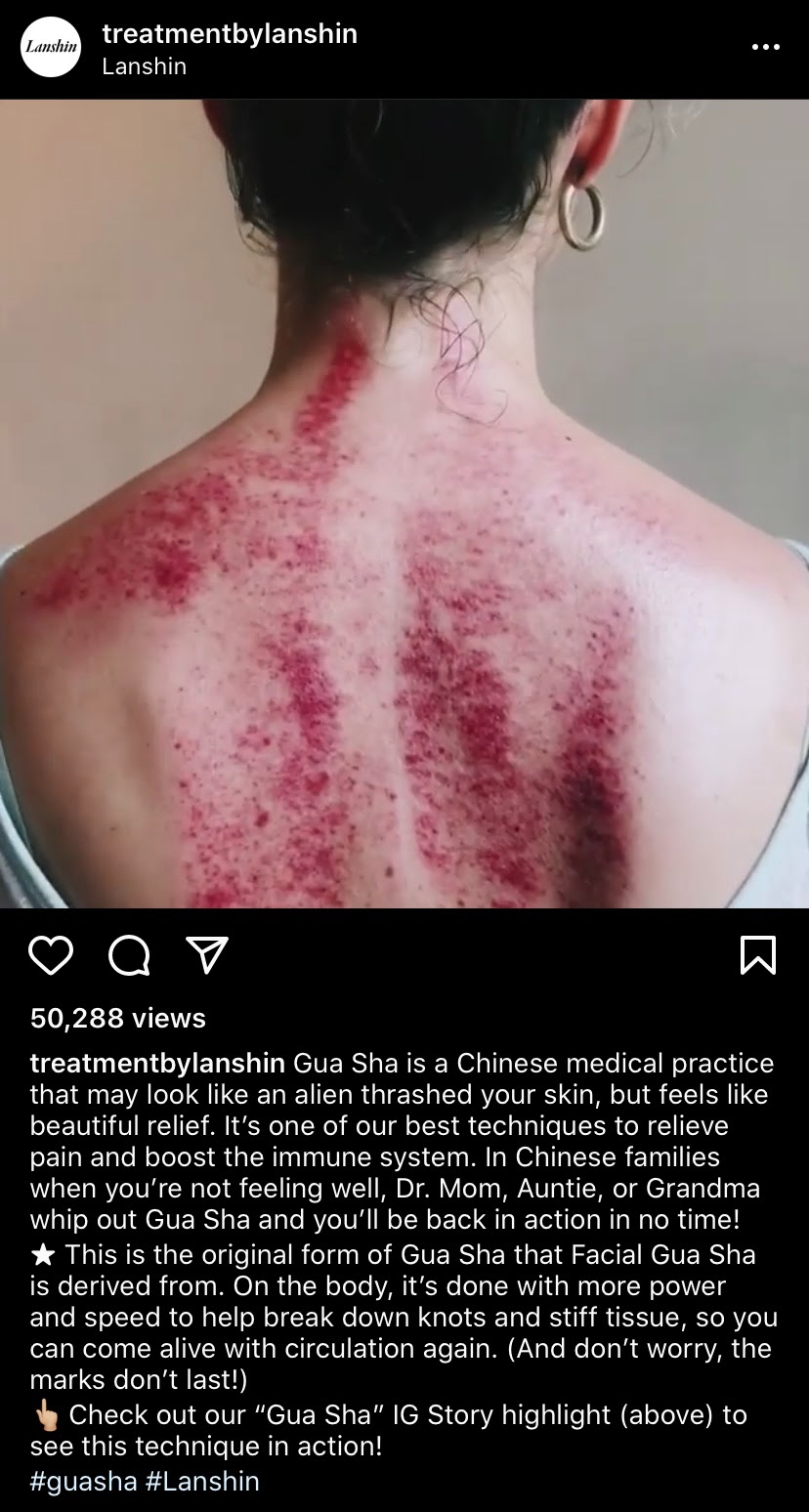Gua sha is a traditional approach to beauty that has picked up steam among beauty gurus. Intrigued by the technique and tool, gua sha is becoming the new “it” item in facial routines.
Gua sha has been around longer than any of these gurus, many who mispronounce its name (guā shā). Nowadays, gua shas are painted as a miracle approach to contour the face. Isn’t it time to give credit where credit is due?
For hundreds of years, gua sha has been part of traditional Chinese medicine.
At first, the practice helped treat heatstrokes and colds. Through the Eastern belief of yin and yang, the gua sha aims to restore the imbalance of energy in excess cold or toxic heat.
Translated, “guā” means to press or stroke and “shā” refers to a rash or redness. The Gua sha method promotes lymphatic drainage by applying pressure.
This approach helps remove bloating that is often caused by interstitial fluid, the fluid within your skin that causes puffiness in your face.
(Before and after images of using gua sha on the face)
Growing up, I saw this practice used on the body instead of the face. My family members used a coin or spoon.
It was pretty traumatic if you ask me. By the time these sessions were over, my grandmother's body would look beaten and bruised.
Yet she always walked out relieved and satisfied with her cure.
The difference between gua sha on the face and body is the speed and pressure. Face gua sha is less invasive and more likely practiced with a jade roller or flat stone tool rather than a coin.
How to use gua sha:
1. Use water or an oil for the best result.
2. Hold the gua sha tool with the curved side to your face and glide it up and out. Work from the neck towards the jawline, chin and around the mouth, around three to five times per area.
3. Next, press the tool flat to the skin under the eyes or other areas of the face to soothe and de-puff.
4. Make small horizontal strokes over the brow bone to lift, or hold and press upwards between the brows.
5. Stroke down the neck to drain fluid.
(Video on how to use a facial gua sha)
Other benefits to using this technique on the face include:
Stimulated circulation
Higher production of collagen
Softer fine lines and wrinkles
Decreased puffiness
Decreased inflammation
Diminished dark circles
Brightened complexion
Sculpted facial muscles
Released tightness
This traditional approach to beauty is taking root in more people’s daily routines. It is clear that its benefits are as everlasting as its history.





One Comment